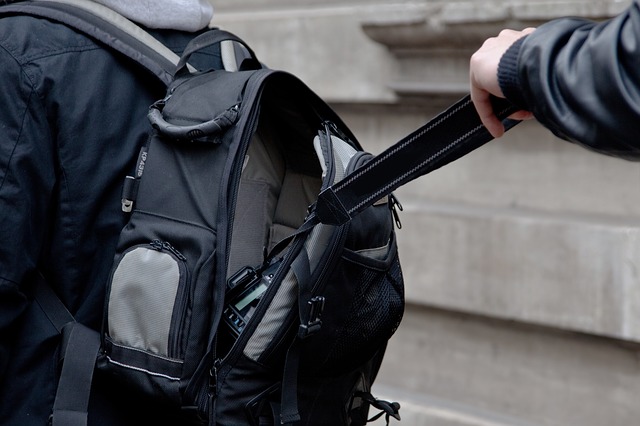Closer relationships among co-workers boost collaboration, teamwork, morale, productivity, job satisfaction, and wellness. As you observe Relationship Wellness Month in February, encourage better work relationships with these suggestions.
Do a Good Job
Employees who consistently do a poor job force their co-workers to do more work. Resentment grows, and your company may miss deadlines and lose customers.
Give employees a clear job description and set expectations for performance. Then celebrate employees who do a good job and meet their goals.
Accept Differences
While it’s tempting for employees with similar interests to congregate together and avoid others who are different, greater acceptance improves relationships and personal well-being.
For this reason, provide opportunities for diverse employees to work together and find common ground. Plan team-building activities, too, as you celebrate and accept differences.
Share Less Personal Information
Your employees are human and will bring personal problems to work. However, distracted employees can make mistakes or cause accidents. Sharing too much information also causes discomfort and conflict between co-workers.
Remind employees to be professional at work. Also, promote the mental health benefits of your employer-sponsored health insurance or provide counseling services for employees.
Avoid Gossip
Juicy tidbits of information about co-workers may seem entertaining, but gossip breaks down morale and can cause projects to suffer. It also reduces trust and respect.
Spread awareness about the dangers of gossip. You can also remind employees to change the subject or walk away from such conversations.
Manage Conflict
Disagreements and conflicts are normal, but these situations create tension and inhibit collaboration.
Create a straightforward conflict resolution process, and maintain an open door policy. With these conflict resolution strategies, co-workers address issues, resolve challenges and restore relationships.
Assist Others
Meeting a deadline or managing a big project can strain busy employees and increase stress.
Promote helpfulness and collaboration as you ease strain, stress and pressure. Everyone on the team can and should work together to get the job done right and on time.
Stay Positive
Sometimes, bad things happen. Employees may make mistakes, struggle to adapt to change or feel unappreciated. Negative and bad moods are contagious, though, and affect everyone.
Instead of allowing negativity, implement a complaint procedure. Then lead by example as you promote positivity.
Plan Fun
In the midst of busy workdays, your employees may not have time to socialize and truly get to know their co-workers.
Schedule an outing, activity or another fun event at least once a month. Give employees time to unwind, relax and get to know each other better.
To observe Relationship Wellness Month, look for ways to improve rapport at work. These tips help you build better relationships among co-workers and increase employee and company success.
Read more

Agricultural workers are at a serious risk of injury or death when installing, climbing into, fumigating, entering, filling or emptying a silo. Because of the nature of the conditions present, workers may be exposed to hazards such as a lack of oxygen, toxic gases and grain entrapment.
To reduce worker risk of injury, properly train workers and remind them frequently of the following safety recommendations:
- Avoid entering a silo unless it is absolutely necessary.
- Complete tasks outside of the silo whenever possible.
- Have a coworker close by in case of an emergency.
- Never smoke or cause sparks near a silo, especially if the air humidity is low.
- Wear respiratory protection when appropriate.
- Stand at a safe distance when filling or emptying a silo.
- Use an approved fall restraint system and harness when climbing a silo.
- Ventilate a fumigating silo before entering.
- Conduct regular safety inspections of silos.
For more farm and ranch safety tips, contact Scurich Insurance today.
Read more

Each year, thousands of businesses, schools and other establishments are mailed suspicious items (e.g., unmarked packages) or are the target of bomb threats. These threats can be made via phone calls, letters, social media channels, emails or other similar means.
Bomb threats and suspicious items are often used to cause alarm, panic, disruption or, in extreme cases, direct harm. However these threats are made, organizations of all kinds need to take them seriously and know how to respond appropriately.
What to Do If You Receive a Bomb Threat
Businesses often wrongly assume they aren’t at risk of a bomb threat. However, the truth is that no organization is 100 percent safe from malicious attacks or threats, making proper preparation all the more important. In the event that your organization receives a bomb threat – whether it be over the phone, via email or another means – follow these procedures.
Threats Made Over the Phone
- Remain calm. Keep the caller on the line for as long as possible, and don’t hang up even if the caller does.
- Signal or pass a note to another staff member, instructing them to notify the authorities. If this isn’t possible, call 911 from another phone after the caller hangs up.
- Document as much information about the call as possible. Details related to a caller ID number, the wording of the threat, the time of the call, background noises on the caller’s end, and the tone and inflection of the caller can all aid investigators. If possible, ask questions to infer specific details about the threat itself, including:
- Who is making the threat and where they are calling from
- The type of device and when it might go off
- What the device looks like
- Where the device is located
- Who the target is
- Record the call if possible.
- Be available for interviews.
- Follow any instructions from facility supervisors and local authorities. These individuals will also provide specific guidance related to facility lockdowns, searches or evacuations.
Threats Made Via Email, Online Platforms, the Mail or Other Source
- Call 911.
- Preserve the threat. If the threat is made online, take a screenshot. If the threat is made through the mail, store it in a safe place and handle it as minimally as possible.
- Note where the threat was found, who found it and when they found it.
- Wait for further instructions from the proper authorities.
In the event of a threat, staff members should avoid using two-way radios, cellular phones or any other electronics, as signals from these devices could potentially detonate a bomb. In addition, you should avoid activating alarms or evacuating the building until the proper authorities evaluate the threat. Law enforcement officials will direct the evacuation if one is necessary.
What to Do If You Find or Receive a Suspicious Item
In general, a suspicious item is any item – like a bag or package – that is believed to contain explosives, improvised explosive devices or hazardous materials. When it comes to identifying these items, you should watch out for unexplainable or unusual wires, electronics, sounds, vapors, mists or odors.
It is not uncommon for establishments to find or receive suspicious items and, while they may end up being harmless, it’s good practice to be overly cautious. As a good rule of thumb, any item that is Hidden, Obviously suspicious and not Typical (HOT) should be deemed suspicious.
In the event that your organization finds or receives a suspicious item, you should:
- Remain calm.
- Avoid touching, tampering or moving the item.
- Notify the proper authorities and your facility supervisor. Follow any and all of their instructions carefully.
Plan Ahead and Stay Safe
When it comes to bomb threats and suspicious items, every situation is unique. Typically, facility supervisors and law enforcement officials will be in the best position assess the situation, determine if a real risk is present and provide instruction on how to respond.
For even more protection, businesses should review guidance provided by the Department of Homeland Security and the Department of Justice. Doing so can help you better prepare for potential threats. For more workplace safety advice and risk mitigation tips, contact Scurich Insurance today.
Read more

The International Risk Management Institute’s Construction Risk Conference (CRC), held from November 4-7, 2018, in Houston, Texas, is designed for construction professionals like you. If you decide to invest in your business and attend this conference, here’s what you need to know.
What is the CRC?
Held annually, the CRC brings together a variety of experts who share up-to-date information about construction industry risks, insurance trends, and strategies and tactics you can take to avoid risks. This year’s sessions include:
- Kathy Antonello, Chief Actuary at the National Council on Compensation Insurance, will discuss “Workers Compensation Trends and Challenges in Construction.” You’ll learn about trends, challenges and ways to manage your Workers’ Compensation program.
- The View from My Seat offers tools you can use to manage new technologies, labor shortages, law and regulation changes, and other evolving construction risks.
- Jim “The Rookie” Morris shares his inspirational and motivational story.
- Breakout Sessions and Snap Talks dive into topics like contracts, design liability, construction delays, and your supply chain.
Who Attends CRC?
The CRC is designed for a variety of people who work in the construction industry. It’s important for:
- General contractors.
- Subcontractors.
- Project owners and managers.
- Developers.
- Construction lawyers.
- Insurance agents, brokers, underwriters, and adjusters.
- Consultants and service providers.
Why should you Attend CRC?
Consider attending the CRC to gain five benefits.
- Gain knowledge about emerging risks, trends and solutions. As you understand new threats in your industry and to your business, you’ll also learn how to manage these challenges in ways that protect your company.
- Position yourself as an expert. Attending a conference will enhance your knowledge and understanding. Use the information you gain to improve your business offerings and reputation as an expert.
- Expand your network. Meet and collaborate with other construction professionals as you strengthen valuable relationships and share advice and support.
- Identify your insurance needs. After learning more about your risks, you can identify and purchase the right insurance coverage for your business.
- Rejuvenate your mind and body. While you’ll listen to experts and network with peers, you also have time to rest and relax, which allows you to return to work mentally and physically refreshed.
How do you Register?
Registration is open until November 7. However, you can take advantage of the Standard rate and save $400 when you register before October 12. Save even more with the discounted rate that’s available to project owners and contractors. Also, remember the IRMI Conference Guarantee. You can request a registration fee refund if you don’t get your money’s worth from the CRC.
Invest in yourself and your construction business when you attend the 2018 IRMI Construction Risk Conference. It’s good for business.
Read more

Employee theft, fraud and embezzlement can cause serious financial and reputation damage to your company. Implement several safety measures as you prevent employee theft and protect your business.
Review Your Hiring Practices
Start with honest employees, and you could reduce your theft risk. Consider implementing the following pre-employment checks for all employees, particularly those who work with finances, confidential data or inventory.
- Criminal history of theft, fraud or violence.
- Civil history of fraud, collections or restraining orders.
- Driver’s license report of serious or numerous violations.
- Education verification of degrees and certifications from accredited institutions.
- Employment verification of positions, length, performance, reasons for leaving, and eligibility for rehire.
Utilize Internal Controls
Prepare for the possibility of theft with policies and procedures that limit this risk.
- Separate duties – Place different employees in charge of transaction processing and recording.
- Control access – Only authorized employees should have access to accounting systems and physical and financial information and assets.
- Authorize control policies – Develop a secure process for initiating, authorizing, recording, and reviewing financial transactions and inventory.
- Update security – Install security cameras, engrave “do not duplicate” on keys to sensitive information, and change locks and security codes when cleared employees leave.
Perform Impartial Audits
In addition to regular audits, hire impartial parties to conduct random audits. Examine financial, inventory and other records as you encourage employees to resist temptation.
Create a Positive Work Environment
When your work environment supports collaboration, fairness, and recognition and implements clear policies, organizational structure, and communication, your employees will probably remain honest. They will feel goodwill toward the company and may be less likely to commit theft and jeopardize the supportive, friendly and healthy environment.
Educate Your Employees
Partner with your employees to avoid and prevent theft. They should know your company’s internal controls, conduct and ethics policy, and discipline process. Ask new employees to review these documents and sign a form indicating they’ve done so, and review the policies at least annually.
Use an Anonymous Reporting System
Equip employees, clients and vendors with the power to report suspicions or proof of theft, fraud or embezzlement. An anonymous reporting system protects your staff while giving you valuable information that protects your company.
Investigate all Theft Reports
Demonstrate that you take theft seriously when you investigate every theft report you receive. The investigation should be thorough, prompt and transparent.
Purchase Adequate Insurance
Commercial crime insurance protects your business as it covers financial losses and liability. Your insurance agent can help you purchase the right insurance coverage and adequate policy limits.
Protect your company from employee theft when you implement several security measures. They can reduce your theft, fraud and embezzlement risk.
Read more

On Thursday, Aug. 29, 2018, the Centers for Disease Control and Prevention (CDC) and the U.S. Department of Agriculture’s Food Safety and Inspection Service announced that salmonella-tainted chicken caused at least 17 illnesses and one death.
Investigation Details
Reported illnesses ranged from Sept. 25, 2017, to June 4, 2018, but the agencies didn’t begin their investigation until June. The investigation was launched after the New York State Department of Health said several of those who have become ill reported eating kosher chicken. When they were asked what specific kosher chicken brand they ate, they reported it was Empire Kosher brand.
At this time, the CDC isn’t advising against eating Empire Kosher brand chicken. There also haven’t been any recalls issued. Instead, they issued a public health alert on Aug. 24 out of an “abundance of caution.”
What You Can Do
Salmonella is a bacteria that causes intestinal illness. If you experience the following symptoms, seek medical attention for possible salmonella infection:
- Diarrhea, fever and abdominal cramps
- Symptoms beginning 12 to 72 hours after suspected ingestion
- Symptoms lasting four to seven days
The CDC recommends doing the following to reduce your risk of contracting salmonella:
- Do not eat raw or undercooked eggs, poultry or meat.
- Avoid cross-contamination of foods. Keep uncooked meats separate from produce, cooked foods and ready-to-eat foods.
- Wash hands, cutting boards, counters, knives and other utensils thoroughly after handling uncooked foods.
- Always wash hands before handling food and between handling different food items.
Read more






